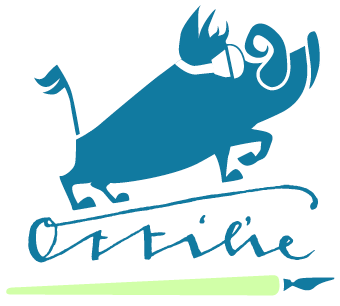Proposal
to the City of Nanaimo and the Regional District (RDN)
to create a position for Visual Sensemaking to facilitate interdepartmental collaboration and civic engagement
Proposed by: Jenni Ottilie Keppler
Dear City Council Members of the City of Nanaimo, Dear RDN Representatives,
as the City of Nanaimo is stepping forward towards becoming more sustainable by implementing Doughnut Economics I see a need for visual facilitation. Implmeneting a new strategy needs alignment of actions of various sectors, decision makers and stakeholders, which poses a complex challenge. Bringing a living (social) system into alignment for moving into the same direction, needs an agreement on a shared vision and principles that can help guide decision making along the process. Visual Faclitation is a great tool to support and accelerate the communication processes within and across different departments, and to the public.
Images can be processed 60 times faster than text (Sammer & Heppel, 2015, p.50). Through visual faclitation complex information can be synthesised into relatable images, that help communicate information across different professional and personal backgrounds. Visual scribings from meetings can help to reinvoke the feeling and key information of the meeting.
There are different types of visual facilitation:
1) A visual scribe records the discussions in sketchnotes, graphic recordings, systems scribing, generative scribings or visual sensemaking.
Sketchnotes:
Sketchnotes are rather rough sketches of what has been said, the formats are rather small
Graphic Recording:
Graphic recordings are literal visuals of what has been said, arranged in a larger image, visuals are more refined. The turnaround is very fast.
Systems Scribing:
Systems scribing depicts what has been shared in wholes, parts, connections, with arrows, lines and behavior over time graphs.
Generative Scribing
In a generative scribing the scribe is part of the process, as she listens to the deeper layers and meanings of what has been said, rooting herself in the earth while being a vessel and filter for what is being shared. After the scribing there is a moment for the group to resonate with the image, reflect and share what the image provokes. The turnaround of the visual is immediate.
Visual Sensemaking
Visual sensemaking is a free form mixing systems scribing, generative scribing and some of graphic recording. It is a longer process of taking in information from a discussion, synthesising what has been said and bringing it onto a visual. The turnaround of the image is not as immediate for a short meeting.
Note: If a discussion is messy, the visual scribing is going to look messy.
2) A facilitator guides participants through a process with prompting activities that involve visual tools. For example, all participants can draw on a large paper together, creating a “rich picture”, which reveals the different views.
Overview of Benefits of visual sensemaking
visuals are fast
visuals are engaging because they invoke curiosity, empathy and humor through artfulness and heartfulness
visual sensemaking makes the people involved heard and seen
visual sensemaking can serve as a reference piece and record
visual sensemaking can serve as a tool to summarize the contents that are being discussed to the public, e.g. every townhall meeting could have a visual layer to it
it lessens social tensions and invites dialog in the room by talking about a third thing (the image), rather than arguing against each other
it can create coherence and a shared perspective, which enables alignment in actions.
it can communicate the spirit and key ideas of a gathering to the outside (other departments, or the public)
it can serve as a document for those who participated
visuals can be shared and exhibitied in municipal buildings, on social media or other online communications
Moments in which visual tools prove to make meetings more efficient and engaging:
As the City’s and Region’s visual sensemaker I would provide:
Holding the content I receive in a holistic perspective coming with a background in systems thinking as well as Forest Ecosystem Management and Global Change Management, visual communication, water-free circular sanitation solutions, Circular Economy, SDG’s Doughnut Economics, Sufficiency, the commons
an ability to connect different types of information in a visually coherent way
synthesising complex information into a visual graphic
skills of illustration, layout, graphic design
flexible digital and analog techniques for meetings in person and online
visual sensemaking, sketchnoting, systems scribing, generative scribing (No traditional graphic recording)
POrtfolio PIECES
Visual Sensemaking at the RIEP Forum on Gabriola Island – April 2023 – Three day conference, in person scribing.
Challenges TO THE City and REGION I see, Having been a resident for the past 14 months:
Impacts from climate change: Droughts, Ocean Acidification
Crisis of the unhoused
Need for supporting public transportation and more pedestrian friendly spaces
Loss of cooling in the region partially due to logging large patches of the surrounding forests
Population growth and increase in rent
Dependency on global supply chains
Increasingly depressed population due to stress from housing, isolation, lack of green spaces and safety in the city, lack of care from the health system, lack of community and social coherence
a fragile sanitation infrastructure that relies on drinkable freshwater
Suggested Employment FORMAT
Full-time employee, paid on a monthly base, with flexible work hours on demand, ranging from 0–5 days per week averaging on 3 days/week. A day be defined as an 8 hour.
In person and remote.
As an artist exploring the fringes of society, a farm volunteer and active community member of the SEED agrihood in Nanaimo I need time for nurturing those places inside and around me to be sustainable and to avoid burnout.
As a reference: The regular pay of a freelance visual scribe is 800€–2400€ per day + material costs + accommodation + travel costs.















